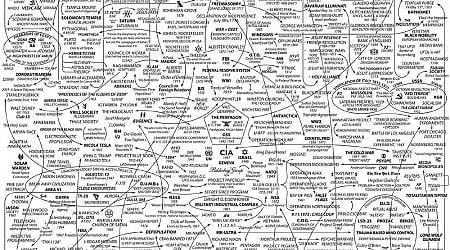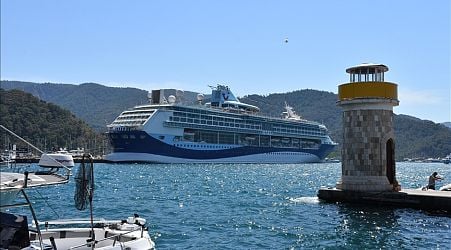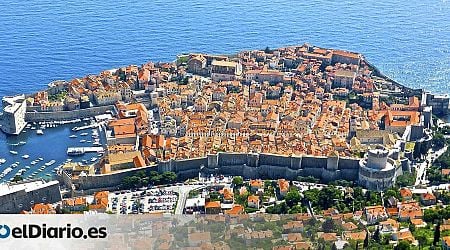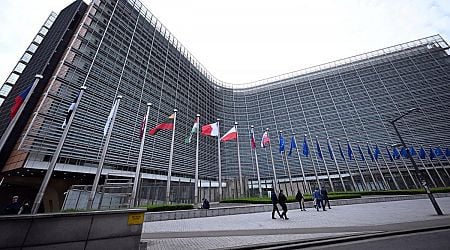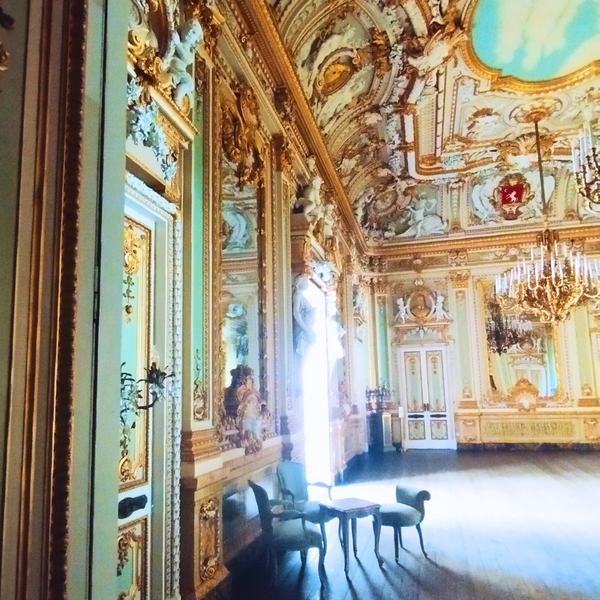The Church schools battle and the 1987 constitutional amendments
Where did you stand when the Labour Party embarked on a battle to close down the Church schools in 1984? Was that conflict, which was ultimately lost as a result of public protest, necessary?The issue had been raised by the Labour government prior to

Where did you stand when the Labour Party embarked on a battle to close down the Church schools in 1984? Was that conflict, which was ultimately lost as a result of public protest, necessary?
The issue had been raised by the Labour government prior to the 1981 election, on two grounds: firstly, that the Church had been gifted with huge assets by the Maltese people over centuries and needed to be publicly accountable for them, using them as well for social purposes; secondly, that Church schools, which were run on an elitist basis, as they required tuition fees that ordinary workers could not afford for their children, needed to become free of charge for all, since the Church was a national and not a private, profit-making institution.
There were a number of factors that played into these claims, which paralleled the move already made by the Labour government to reorganise as a public hospital, a private health facility in Sliema, the Blue Sisters, run by a congregation of nuns. The nuns had refused to make the changeover and left Malta (some said, they had been kicked out).
In material, economic terms, the Church’s assets were really huge by way of real estate but sloppily managed, if they were managed at all. Abuses were sometimes the order of the day, as had happened during the 1960s with how Church land was bought and sold prior to the large scale development of Buġibba and the Santa Maria estates in Mellieħa.
Then, during the early 1970s, Church schools which had been financially sickly and moderately prized academically suddenly attracted the interest of families who began to enroll their children in them. On the one hand, the social welfare measures introduced by Labour itself encouraged the aspirations of families that were newly brought into the middle class to provide a status enhancing education for their children. More importantly, there had been a decline in the standards of government schools due to the cack-handed introduction and implementation of progressive educational reforms. If they had not been botched, these would otherwise have been of great utility but instead they ignited disquiet among teachers and parents and lowered standards, or so it appeared. The migration of pupils towards private schools demonstrated this disquiet.
As with the Blue Sisters case initially, the Church probably believed the issue would die a natural death and I suspect this feeling grew when the 1981 election was through. For given that its result was triggering huge political complications, why on top of them should the Labour government bring in a further cause for confrontation, and with the Church? – one that would be reminiscent of the politico-religious strife of the 1960s? Even in the Labour camp there were many who shared this view. But it was not to be.
Prime Minister Mintoff pushed for the issue to be raised again and with determination. His “new” lieutenant, Karmenu Mifsud Bonnici, marked out as a “moderate”, was perhaps even more determined. Not only did he share the view that there should be equal opportunities for all in education, and that the Church’s assets should be used to the benefit of society as a whole not secretly managed, but he also considered the matter from the perspective of a Catholic militant pushing for deep internal Church reform in line with the precepts of Vatican Council II.
Thousands gather in Dingli Street Sliema to protest against the Labour government's plans for Church schools in October 1984. Photo Times of Malta
As the controversy grew, the government sought to bring the Vatican into the dispute, rather than deal only with the local Curia which seemed intent not to bend in any way to the government’s pressure. The rumour was (probably correct) that in Rome influential quarters were, within limits, in favour of reforms in how the Maltese Church was run.
As the situation heated up, the Church, school administrations and parents mobilised to contain the government’s pressure. Naturally, the PN rode on the issue and fanned the flames.
An ongoing argument related to the Catholic identity of Church schools, which prelates and parents insisted would be undermined if Church schools were integrated into a national system, as the government seemed to require. As far as I could see, there was little to distinguish the “Catholic” identity of Church schools from other state-run schools. Probably the latter still had stricter pro-Catholic ways of doing things than Church schools (where lay teachers already predominated) but the argument made waves.
By the second half of 1983, a potential compromise had been identified to reconcile the differing claims as follows: the Church would publish accounts of its annual financial performance and a schedule of its assets; the same for its schools. If it turned out that on the basis of its income and holdings, it was proven that the Church would not be able to run its schools free of charge, then the government would chip in and clear the shortfall from its own resources.
Laying out a full picture of this scenario was an extremely complicated job since the Church’s operations ran through a multitude of formal and informal organisations, of which parishes were only a distinct subset, most with minimal administrative controls, some with almost no records at all. The same applied to the holdings of religious organisations, which were run separately from the Curia. Similarly, Church schools were run mostly by religious orders, on a financially autonomous basis.
It is fair to say that across the board, most accounting and control systems were quite primitive. The same applied to the registries compiled by the Church of its properties across the islands. Bringing all these different operations under a common financial standard was a time-consuming and very difficult process.
Unofficially I had assessed for an MLP publication, the first accounts of the Curia’s finances that were made public (by the audit firm I had previously worked with, an affiliate of Coopers and Lybrand) and later I was tasked by KMB, along with Alfred Mifsud, to further analyse the data that the Church was publishing. I participated in the meetings, mostly technical but also political, that took place in the negotiations between the government and the Church/Vatican over the financial implications of the Church accounts, to which the Church schools standoff had become intimately locked.
The situation “on the ground” became red hot. The government passed a law to take over properties controlled by the Church but for which it had no clear title. There were many. The Curia assumed control over all Church schools. The government refused an operating licence for Church secondary schools that maintained fee requirements from students. This culminated in the closure of all Church schools. Running in parallel, a teachers’ strike (that in theory had nothing to do with the Church schools impasse) shut down all state schools. Parents and pupils at Church schools mobilised resistance against the government.
I need not repeat here blow by blow the storyline of that overlong and bitter confrontation. But I disagree with your point that it “was ultimately lost as a result of public protest”. Lost by who?
Students protesting at the height of the Church schools battle. Photo Times of Malta
In terms of outcome, both sides – the government/MLP and the Church/Church schools/parent organisations “won”. The latter maintained autonomous management and control of Church schools, whose right to function was reaffirmed as well as their right to retain their separateness and “Catholic identity”. The government secured that Church schools were to be free of charge with entry by competition. In addition, a “social” accountability and a financial redirection of the Church’s material resources donated to it by the Maltese people became operative to subsidise schooling in Church facilities.
Was all this worth it? With hindsight and plus: I think not. At the time, I privately sympathised with arguments made by people on the left, in the sense that to counter social inequality, all the government needed to do was concentrate its attention and resources on making state schools the best on the island, and providing all the financial resources they need for this. Soon, as economic entities, private schools would shrink as they would be beaten in educational terms, lose enrollments, have to raise fees, lose further enrollments and no longer be viable.
Meanwhile, government pressure on the Church had forced it to start the necessary process, which it had neglected, to rationalise and modernise its administrative structures (this was confirmed in informal chats I had with Church officials). All this was in the end, largely to the Church’s benefit. However, a huge political cost to Labour was the resentment and worse that it had aroused within significant cohorts of Catholic school pupils and their families which they carried over into the next decades. Later they remained core supporters of the Fenech Adami and Gonzi administrations.
Even worse perhaps, the state’s funding allocations to education would end up split into two to accommodate financing of Church alongside that of state establishments, as is the case to date. In public financial terms, this is clearly a sub-optimal arrangement. It affects adversely pupils in state schools for it restrains financing for their education.
At the time, on the ground, my stand was that if the Labour government had declared clearly what its goals were on Church schools, no room was left for retreat. Had the government given up on its claims in favour of social reforms, it would have been seen as working out of bluff. Its credibility and effectiveness would have been in tatters. Under such circumstances, to retain its ability to govern, the administration would likely have had to resort to strong authoritarian measures, which I was against. So I did what needed to be done on my side to get the government’s message into good shape.
As someone who cherishes education, did you endorse the idea that entry to University, in those years, was restricted to a limited number of students?
Once more, this is a tendentious way of approaching the issue. There was never an idea to restrict University entry to a limited number of students. In the field of tertiary education, what the Labour government attempted to achieve in the mid-1970s, following some initial fumblings, were the modernisation of priorities in the academic sphere and following that, the introduction of a closer alignment between the world of work and academic studies.
The first goal was achieved by upgrading the status and content of tertiary studies in civil, mechanical and electrical engineering, education (teacher training) and public and business administration studies. I could hardly be against this since when I came back to Malta during the second half of the 1970s, I had spent almost three years following business degrees in the US, which gave a big educational exposure to situations that linked study and work. Here, tertiary studies in this area were to become fully fledged degree courses in the full mainstream of University life. They remain so to this day where previously they had been regarded as secondary “technical” disciplines, to be taken up by students who did not have what it takes to follow courses in the traditonal professions like law, or in the “pure” arts or sciences. In the process of implementing this reform and overcoming the resistances that arose, the then Polytechnic at Msida was converted into a “new” University with its own academic staff, and eventually it was merged into the “old” University at Tal-Qroqq.
Similarly, I had thought the idea of introducing the student worker scheme was a good one (even if the government was immediately attacked for importing “Maoist” values from China). Against much academic resistance, courses were restructured to follow a six-month study, six-month work model, but the government’s approach admittedly became increasingly confrontational. It could have adopted a more gradual, less dogmatic approach but then in this sector, as in all others, the PN machine was active to encourage non-acceptance of the government’s ideas. That provoked a counter productive hardening of the government’s stance, which probably was what was intended.
Anyway, a system was devised by which to select applicants, according to their preference, for the job-study openings that would develop. The success of the scheme depended on sponsorship of students by employers which signalled that students interested in the “pure” subjects would likely not find sponsors. This was another problem that was never really dealt with head on, so that a considerable number of academics felt themselves under threat. Meanwhile, the private sector was totally reluctant to sponsor students for any branch of learning, in the expectation that the state should be fully responsible for tertiary education.
So government entities were pushed to sponsor students. Initially there were more than enough openings for student applications, since at the time student numbers overall were still very small compared to today’s University student uptakes. However, over the years, the government’s ability to sponsor sensibly new worker students (or student workers) declined, which reflects your misapprehension about deliberate restrictions on university education.
I was involved in these processes over a number of years. When academic staff were being inducted in the “new” University, I was a member of a board which endorsed academic appointments to that establishment, but was dropped from it when I refused to approve some appointments that in my view were not up to scratch. Then for a year I served as chair of the board that selected students for courses, where I insisted on a transparent execution of the task that allowed applicants to appeal in time any decision they deemed to be unfair. I resigned the post in 1984 on being elected MLP president. (In later years, at the end of a TV debate closing an electoral campaign, Dr Fenech Adami claimed that I had deliberately turned down his son’s application to study. It was a malicious fiction, probably deliberate.)
For quite some time then, I was a part-time lecturer in the the University’s management faculty and ran two courses in public administration for development.
I was also asked to serve on an ad hoc university committee set up to restructure the legal course, then still based on a six-seven-year model leading to the LL.D degree. On it, the academic members from the legal faculty were mostly interested in dragging their feet.
And finally, I was member of another ad hoc committee under the then University rector Professor Xuereb which carried out an in-depth overall evaluation of the student-workers scheme and made proposals to update and keep it afloat. One conclusion of the report was that students found the financial independence afforded to them by the student-worker scheme as most helpful, while on the academic front, not enough had been done to adapt course curricula to the six-month study – six-month work structure on which University studies were predicated. That report was placed on the Table of the House of Representaitves by KMB as prime minister.
I do not consider that any of my contributions to the student-worker scheme or the advice I gave regarding it, contradicts in any way a commitment to cherish education.
In the months preceding the 1987 election, an agreement was reached for constitutional amendments to be implemented so as to avoid a repetition of the 1981 result. This came with the inclusion, in our Constitution, of the neutrality and non-alignment clauses. A compromise that did not please either side to the full, but in the end the PN got the changes that would guarantee its electoral win and Labour got the assurance that Malta would keep its distance from West and East so dear to the prime minister of the time. What’s your take on this?
I was unreservedly in favour of this compromise. It gave both parties what they had striven for over years so that even dissentient voices in both parties, which did not see why there should be a compromise, accepted it in the end or became totally marginal.
I was present at the intense parliamentary meetings of the Labour Party where the matter was trashed out. I presided over the national executive committee which endorsed a deal and saw my job as that of ensuring that an agreement was endorsed asap, which happened. Ditto for the meeting, which I also chaired, late in December 1986, at the then Mediterranean Conference Centre in Valletta where a Labour general conference was held jointly with the GWU Congress for one vote on the deal being proposed. (At the time, there existed a “statutory” merger between the MLP and GWU, similar to the one in Great Britain between Labour and UK Unions)
A problem was that conference delegates, who had been left outside the loop, still harkened back to the initial claims made by Labour that among constitutional safeguards which needed to be introduced, one had to cover a guarantee of social rights. It had fallen by the wayside in the course of negotiations, but some delegates had other ideas, and wanted to revive it.
The motion to endorse the constitutional agreement was tabled. A delegate – whom I knew as a genuine and intransigent enthusiast for workers’ rights, and whom I rather liked – rose when the motion to endorse the constitutional agreement had been tabled, to propose an amendment that would have inserted social rights alongside the constitutional change on electoral law. The situation could have become tense.
I ruled him out of order, on the grounds that the agenda for the conference had clearly stated the debate would be on the proposals being put forward by the parliamentary group and the national executive. It was a dicey ruling and could have been contested.
The delegate in question was caught short. He thought there would be support for his position but it gave no sign of being there. The business of the conference proceeded as planned.
Part 1: The 1981 election and the transition from Mintoff to KMB
Part 2: The 1980s’ bulk-buying system and public sector employment
Next week: The 1987 change of government and the rise to Labour Party and Opposition Leader
Related
Share this page
Guest Posts by Easy Branches






















